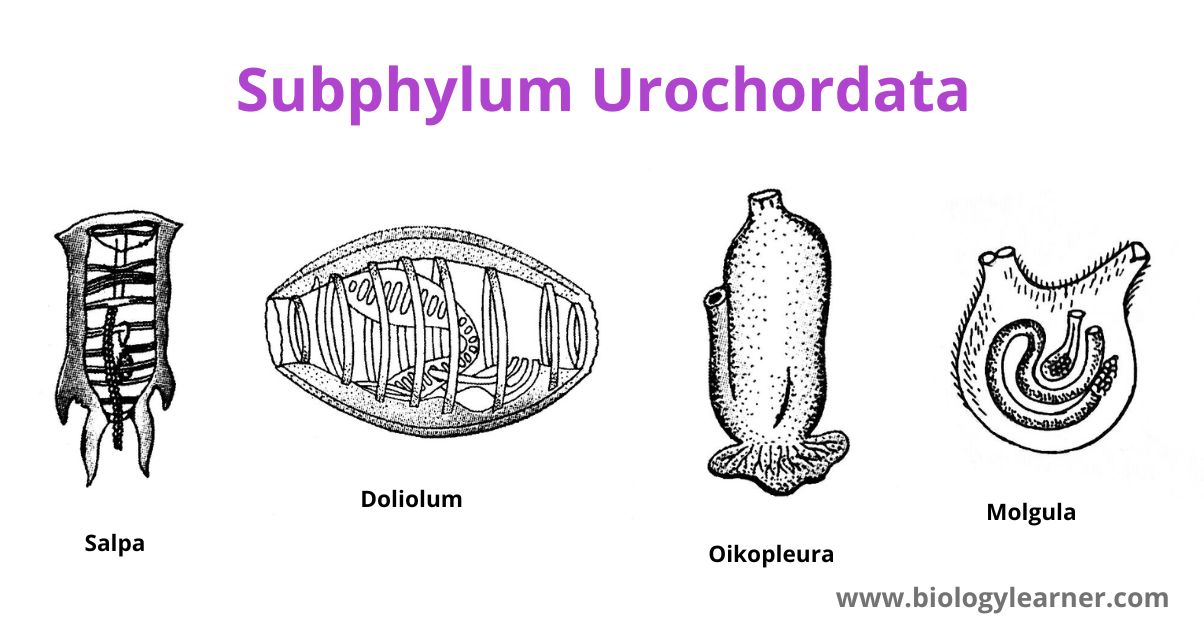The sub-phylum Urochordata (Gr., uro, tail; chorde, cord) is a part of the phylum Chordata. The animals in this group are called sea squirts,or tunicates. These animals are very unique and show a high degree of diversity in their form, habit, and habitat.
The chordate characters of Urochordata are more noticeable during the larval stage.
Definition of Urochordata
Sub-phylum Urochordata represents the animals that have notochord only at their larval stage and can exhibit retrogressive metamorphosis, the formation of colonies, and the alternation of generations.

Characteristics of Urochordata
- The animals are strictly marine.
- They may be sessile (Ascidiacea) or permanently pelagic (Thaliacea or Larvacea) in form.
- Adults are unsegmented and mostly attached to a substratum.
- The notochord is restricted to the caudal or tail region in the larval stage. Hence, the name of this group is given as Urochordata.
- A dorsal hollow nerve cord, pharyngeal gill slits, and a prominent post-anal tail are also present in the larval stage.
- The nerve cord extends from one end to the other.
- The body of the adult is soft, and it is covered by a flexible tunic or test. Hence, these animals are commonly known as tunicates. The tunic is composed of the protein tunicin and cellulose.
- There are two openings at the free end of the body. One is the mouth, and the other is the atriopore.
- The proximal part of the alimentary canal is greatly expanded and forms a wide pharynx.
- The circulatory system is open, and the heart is simple and tubular.
- The pyloric gland, neural gland, and nephrocytes are found as the excretory organs.
- Reproduction takes place both sexually and asexually.
- These animals are mostly hermaphrodites. Fertilization occurs externally.
- Asexual reproduction takes place through the buds formation.
- Development shows retrogressive metamorphosis, which occurs through a free-swimming tadpole larva.
- Presence of the alternation of generations in the life cycle.
- Colony formation occurs in some Urochordates.
Examples
Ascidia, Salpa, Pyrosoma, Doliolum, Herdmania, Molgula, and Appendicularia.
Classification of Urochordata
Sub-phylum Urochordata is divided into three classes: Ascidiacea, Thaliacea, and Larvacea.
Here, the classification is adopted from Berril (1950). The outline of the classification is given below:
- Class 1. Ascidiacea
- Order 1. Enterogona (e.g., Ascidia)
- Order 2. Pleurogona (e.g., Molgula)
- Class 2. Thaliacea
- Order 1. Pyrosomida (e.g., Pyrosoma)
- Order 2. Doliolida (e.g., Doliolum)
- Order 3. Salpida (e.g., Salpa)
- Class 3. Larvacea
- Order 1. Copelata (e.g., Appendicularia)
